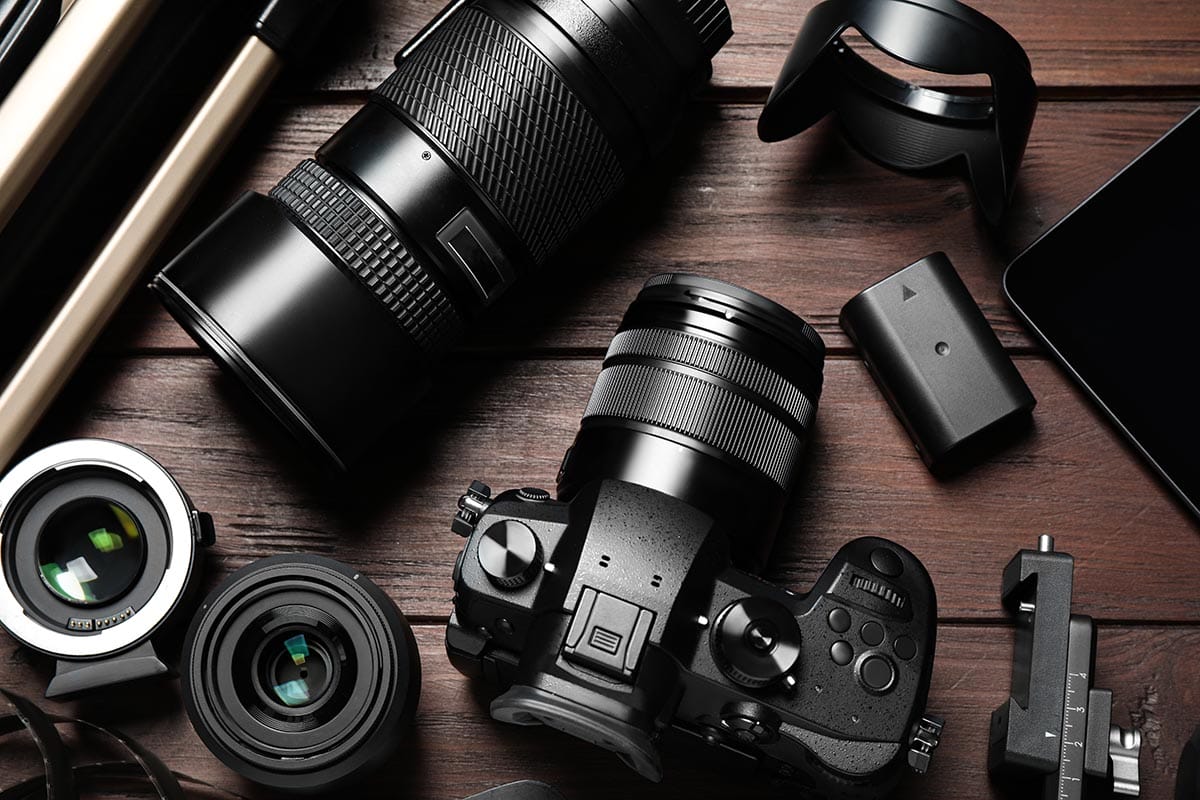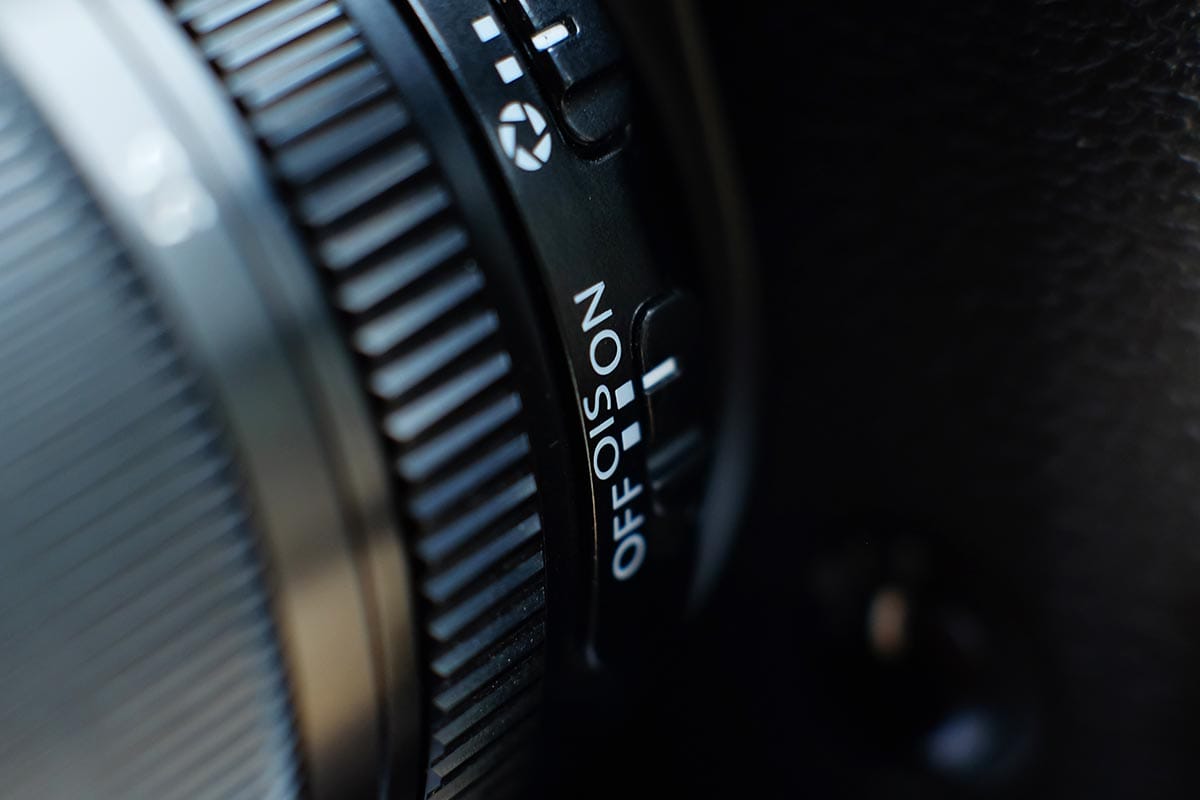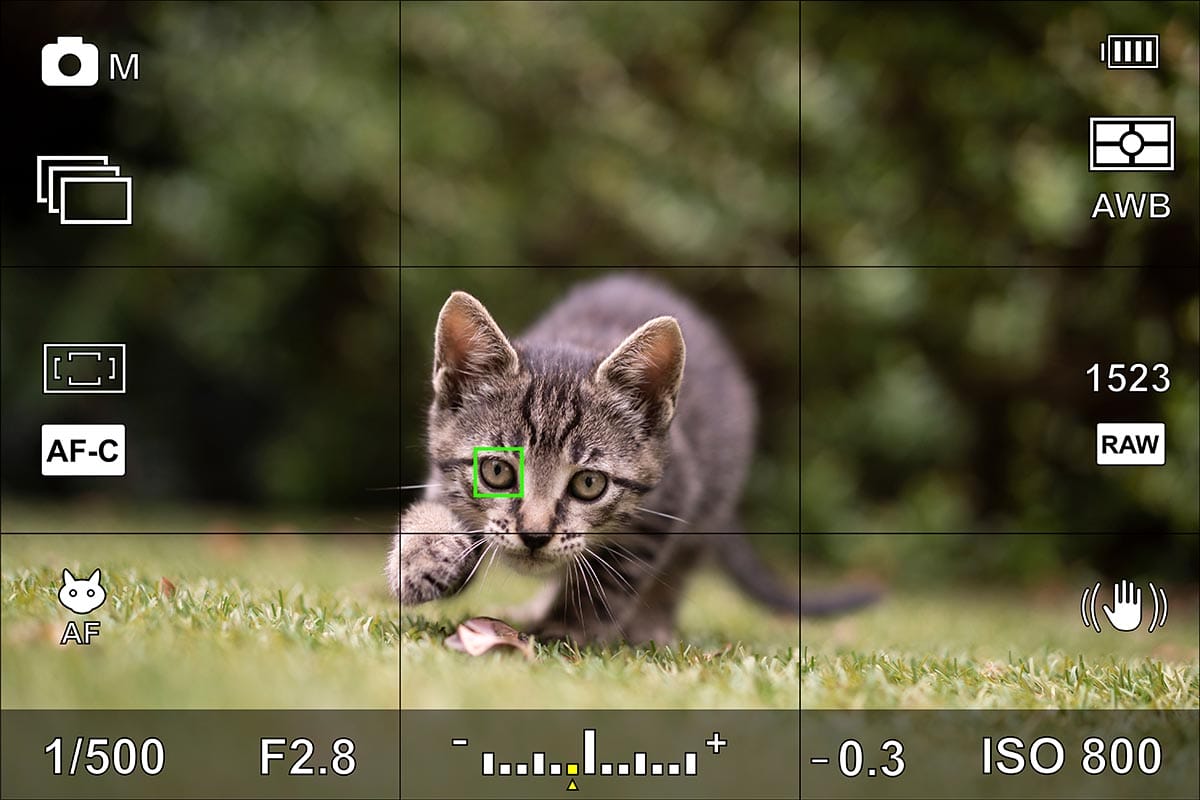
Image stabilization (IS) is a technology in photography that helps reduce or eliminate the effects of camera shake and vibration. When a photographer takes a picture, any slight movement or shaking of the camera can result in blurry or shaky images.
This can be a problem in low-light situations to get a photo well exposed. Image stabilization works by compensating for camera movement, either by moving the lens or the camera sensor, to ensure that the image remains sharp.
There are two types of image stabilisation: optical and digital.
Both types of stabilisation can be effective, but optical stabilisation is generally considered to be more effective in reducing camera shake and producing sharper images.

Optical image stabilisation (OIS) is used to help reduce the blurring or shaking that can occur when taking photos.
It works by using a system of sensors and actuators to compensate for unwanted movements or vibrations that can cause the image to appear blurry.
OIS moves the lens or image sensor in the opposite direction of the camera’s movement, effectively stabilising the image and reducing blurring.
This is done through the use of tiny sensors that detect the direction and magnitude of any movement, and actuators that physically adjust the lens or sensor position to compensate for it.
There are two main types of OIS: lens-based and sensor-based.
By reducing blurring and shaking, OIS can improve the quality of photos and videos, particularly in low-light situations or when using a long zoom lens.
It can also help photographers and videographers capture more detailed and sharp images without the need for a tripod or other stabilization equipment.
Overall, OIS is a great technology that has become increasingly common in many types of cameras and imaging devices.

There are several ways in which optical image stabilisation can be used.
One common method is to use a floating lens element, which is suspended in the lens by springs or other mechanisms. When the camera detects movement, the floating element moves in the opposite direction to counteract the motion and keep the image steady.
Another approach is to use gyroscopes or accelerometers to detect camera movement and adjust the lens position accordingly.

Digital image stabilisation (DIS) is a technique used to reduce or eliminate the blurring.
Unlike optical image stabilisation (OIS), digital image stabilisation works by processing the image after it has been captured and applying software algorithms to correct any unwanted movement.
When using digital image stabilisation, the camera captures a slightly larger area than the final image. This allows for some additional movement or shaking without affecting the final composition.
The software then analyzes the captured image and identifies any unwanted movements, and applies corrections to the image to stabilise it.
Digital image stabilisation is typically less effective than OIS, particularly in low-light situations where higher ISO settings may be required, as digital stabilisation can introduce additional noise or artefacts into the image.
However, it can be a useful technique for cameras that do not have built-in OIS, or for situations where a tripod or other stabilisation equipment is not available.
Overall, digital image stabilisation is a valuable tool for improving the quality of photos and videos by reducing unwanted motion blur and shaking.

In-body image stabilisation (IBIS) is another method of stabilising images, which involves moving the camera sensor instead of the lens.
IBIS is often used in mirrorless cameras, which do not have a physical mirror to reflect the light into the viewfinder. When the camera detects movement, it uses electromagnets or other mechanisms to move the sensor in the opposite direction to counteract the motion.
Image stabilisation can be particularly useful in a variety of situations. For example, when shooting in dark conditions, it can be difficult to use a fast enough shutter speed to prevent camera shake.
Image stabilisation can help compensate for this by allowing the use of longer shutter speeds without blurring the image. It can also be useful when using a telephoto lens, which can magnify even small amounts of camera movement and produce blurry images.


Another benefit of image stabilisation is that it can help make it easier to shoot handheld video footage. When shooting video, any camera movement can be very noticeable and distracting. Image stabilisation can help keep the footage steady and smooth, even when the camera is moved around.
There are some limitations to image stabilisation, however. It cannot completely eliminate all camera shake, and there are some situations where it may not be effective. For example, if the camera is moving too quickly, or if the subject is moving too quickly, image stabilisation may not be able to keep up.
Additionally, image stabilisation can only compensate for camera movement, and cannot help if the subject is moving.

There are hundreds of lens in the marketplace that carry some form of optical image stabilisation. Here are just some of our budget-friendly favourites.
Overall, image stabilisation is an important technology in photography and can help produce sharper and more stable images, particularly in low light or when using long lenses. The type of stabilisation system you choose will depend on your photography needs and the equipment you use.
When choosing a camera or lens, it is worth considering whether it includes image stabilisation and how effective it is likely to be in different shooting situations.
Photographers elevate your photo editing with Adobe Photoshop Express, a beginner’s guide for spectacular results.
Find everything you need to know in this guide to polarizer lens filters for photography. How do they work and which is the best to buy?
Discover TOP features in the Lightroom CC mobile app with this guide for enhancing your photo editing skills. For desktop and tablet too.
Learn the basics of photography – fast – with our FREE 60-Second Photographer online course. Each class is short and sharp with simple, actionable steps that give you immediate results.
x 30 lessons

© iPhotography™
Become a confident and competent photographer in less than 30 minutes!
Before you leave, make sure you’ve secured your FREE online photography course (worth £29.99)
Each class is just 60-seconds or less making it the fastest and easiest way to learn photography!